How we did a car tracker
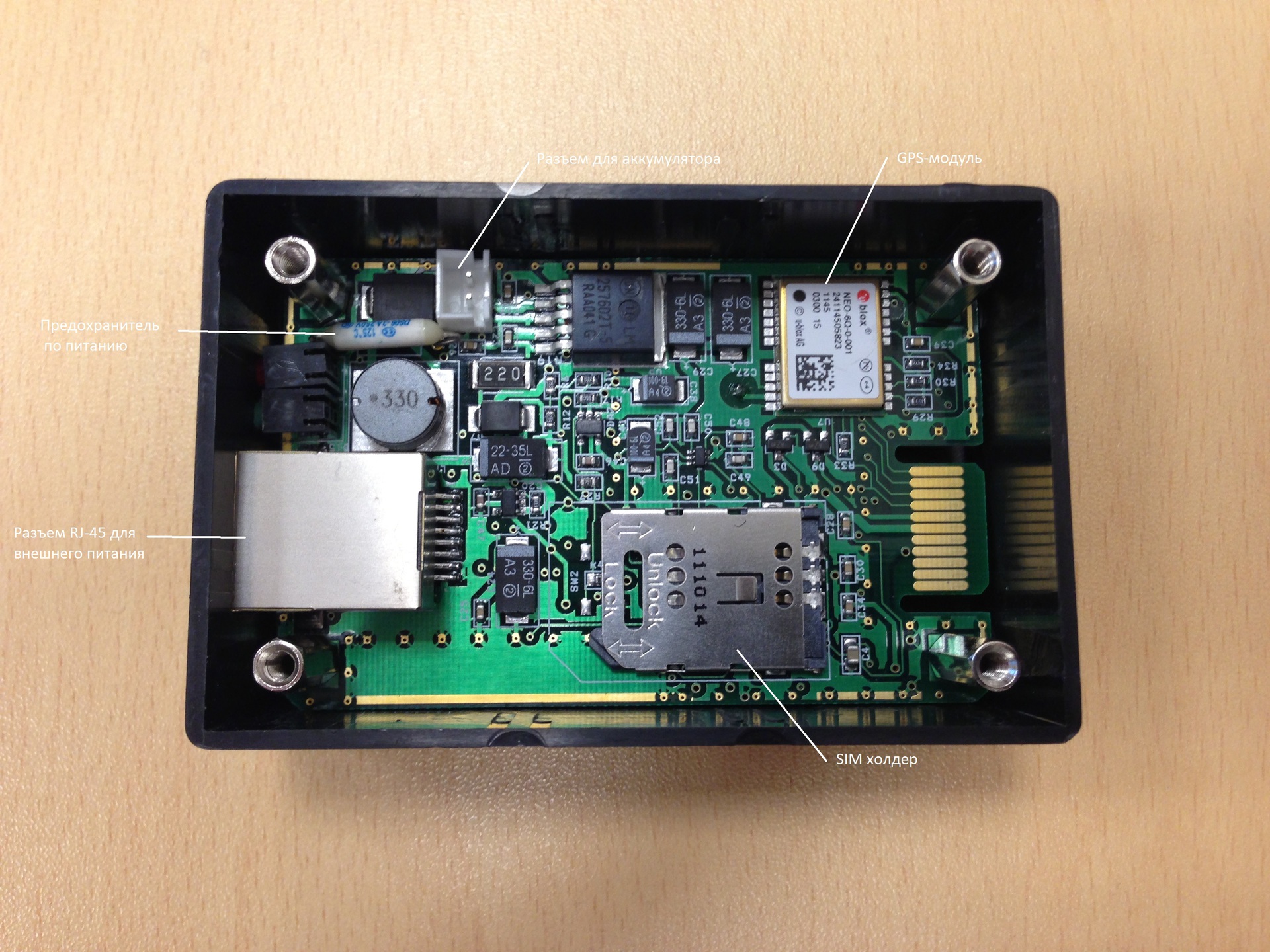
Three years ago we decided to make a simple decision: you take a box, put it under the hood, pay 195 rubles a month and always know exactly where the car is. In real time.
The trackers were then, and there were quite a lot of them. But either these were options from security companies (expensive and business-oriented), or ones that a person without IT education could not use at all. Buy something for personal use was impossible.
')
I had a task to make a tracker that any car owner can use. That is, the iron allowed, but it was necessary to make sure that this thing entered the mass market.
We started by buying a few pieces of iron for the experiments and starting to look at how they will be used. Someone saw that the son did not go to the country; someone found his car in the parking lot; someone helped his wife to get to the store. I called the insurance service station and asked when they would start the repair (they have a shop and a platform in different places). They assured me that the work was in full swing - and I just clarified why the car was not in the shop then. In general, it turned out that “civilian” applications are just a sea.
And at the same time, we quickly realized that the available hardware was generally normal, but requiring improvements and cheapening, and the software needed to be written from scratch.
How the tracker works
- Transmits data on demand or in real time with the coordinates of the machine.
- Determines the coordinates of the GPS, GLONASS and, importantly, the nearest station of the cellular network.
- Writes the track to our server in the client’s personal account.
- Configured from personal account or IVR.
- Payment is not for traffic or something else incomprehensible, but simply for the service - the same per month.
The connection is simple - bind your phone number as an administrator number, install the tracker in the car - that's all.
Primary tests
During the tests, it turned out this:
- The tracker should give data via GPRS, that is, use the mobile Internet, and not SMS. Almost all similar solutions sent SMS - then the presence in the coverage area of the base station does not mean the presence of GPRS. We, seeing that the situation will change very soon, immediately laid down on such a requirement. This made it possible to update the data in real time very often, plus reduced the cost of use (it was then very expensive for the subscriber) and allowed the release of channels. Plus, SMS was sometimes delayed due to overload of the SMS stack (for example, for the new year), which was also successfully solved by GPRS. With active use, by the way, the tracker "eats" only 15 megabytes per month.
- The main problems with the trackers were all with the settings. Somewhere a programmer was needed, somewhere it was decided to connect to the desktop, but more often it was a bundle of SMS commands with rather poor feedback. It turned out that the most convenient thing for people was a phone with an IVR, where they could just answer questions in the "yes" or "no" style by pressing buttons. Plus, in parallel, we began to develop a clear web-based interface where you could see the tracks and other information.
How to choose a supplier
We began to look for a supplier, and found one Russian company that assessed the future market and said that it was ready to spend time and energy on refining the hardware and low-level software. They were open to our requirements, a list of which we have already appeared. To begin with, they assembled a standard piece of iron, which they supplied to private security companies, and gave us a batch of about 100 pieces.
Second iteration of tests
We distributed them to colleagues and, more importantly, to drivers. The drivers immediately said a couple of very important pieces:
- First, the standard power connection interface did not fit. Somewhere the power was connected once "forever", but in about half of the cases the driver stuck the device into the cigarette lighter through an adapter system. Therefore, we immediately decided to include two laces in the basic package - the second one just for the cigarette lighter.
- Secondly, we were tormented for a very long time with the connector for the power input to the device. There is constant vibration in the car, so someone used screws for durable fastening, some clever clips. As a result, we made a rather paradoxical, but logical decision - RJ-45. It is simple and clear as a connector, it is obviously stuck, it already contains a latch and is generally very convenient for drivers.
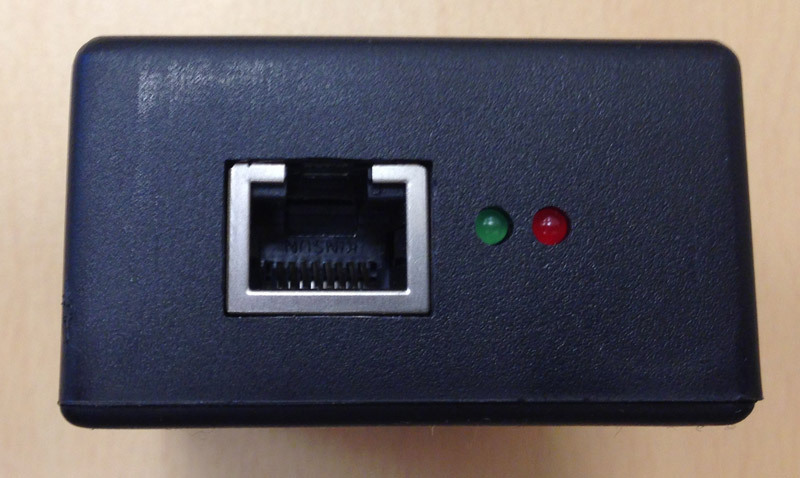
Reinforced nest

Cable
- Thirdly, I needed a battery. The tracker could be left without power for several hours if the cigarette lighter socket in the car is de-energized when the engine was turned off (the drivers were worried that they could turn it off when it was stolen, for example) - but it still had to transmit the coordinates.

The battery is very simple and affordable, holds from 4 to 6 hours.
At the same time, we ourselves have come to the point that the piece of iron should easily be mounted on a magnet anywhere to the body. Chpok - and fell into place. This turned out to be the simplest - a strong magnet did not interfere with anything inside.
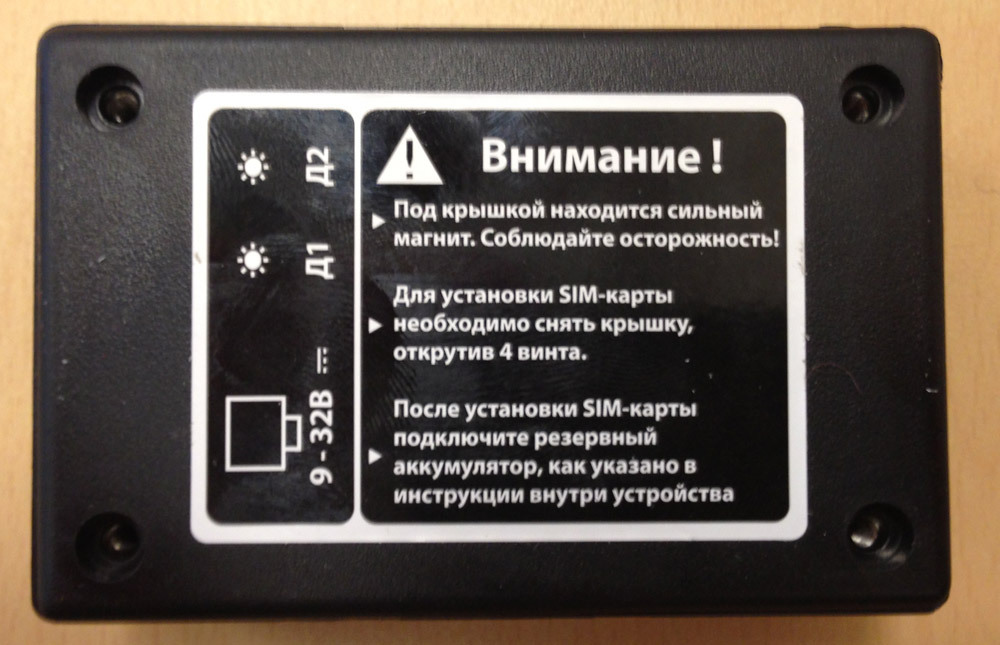
Warning on the serial version
Third iteration
The supplier at this time worked with a piece of iron according to our requirements. We tested new versions. They collected it partly from domestic, partly from Chinese components. There was a problem with the Chinese - in the conditions of dense development unpleasant bugs began with precision. It turned out that you need to change the GPS chip, most likely - along with the antenna. It turned out that our plants do many times better in quality (what else we can do is antennas), plus it turns out even cheaper. Our partners collected several prototypes, changed the iron, and problems with precision are a thing of the past.
At this time, the power cables began to break. The braid froze - in severe frosts we have not experienced it yet. I had to look for special cold-resistant options and test them. We froze them, and then bend and unbend them a few hundred times. As a result, stopped at the silicone sheath.
Worried about the fact that the magnet on the tracker will force some to fasten it covertly somewhere at the bottom of the car, which will affect the quality of the signal reception - they checked it, it still catches confidently.
Portal
At this time, the first web interface was ready. He looked engineering and looked more like an extended console, but he already allowed full-fledged tests with real people. The next iteration, he became what he was supposed to be. It was possible to watch the movement on the map in real time, the history for 3 months, quickly set the car to arm, plus catch various warnings in the form of SMS from the server like the fact that the battery almost sat down (very useful in winter). As you understand, we did another important thing - the connection was not directly with the tracker, but with our server that configured the tracker:
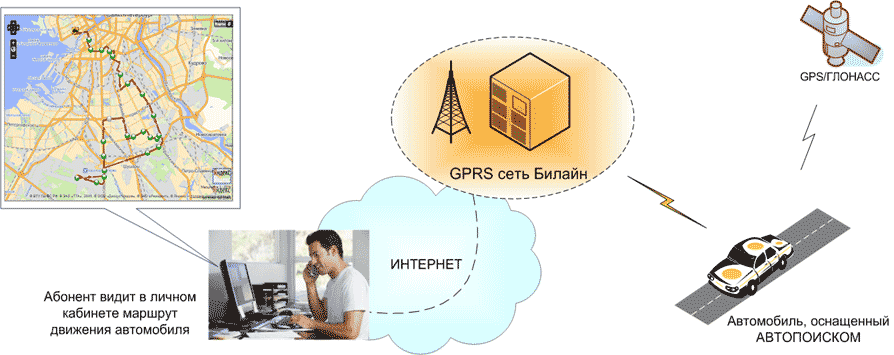
Simplified Solution Architecture
The most frequent actions - setting and disabling the protection mode - we put out to short numbers, the call to which, respectively, activated the necessary modes. In the security mode, when power is off or moving, an SMS immediately arrives about this event.
Cards
In parallel, we were looking for suppliers of maps for display in your account. The task is not quite trivial, because everything is copied. As a result, we use free OSM cards, plus we have made very important agreements with major suppliers, we give them impersonal statistics from trackers for their traffic jams, and they give us maps.
At this time, problems began with the jumps in the tracks. The fact is that in addition to GPS and GLONASS, we found the position of the car at the nearest base station. In the case where there was no GPS (a tunnel, for example, or a well from houses, or a couple of minutes after the device’s cold start), the coordinates rode for several kilometers. A business
in that we did not use triangulation (no one uses it at all - this is one of the myths of determining the position of base stations), but simply the signal level to the nearest known one. I had to write a very approximate and rough model of the car’s behavior in order to avoid complex cases. For example, the assumption that the tracker cannot move at a speed higher than 250 km / h allowed us to remove 90% of the erroneous positions.
Sometimes the tracker lost contact with the base station, or made a reconnect at the transition from one BS to another. It took a small buffer where it was possible to add data between communication sessions and then send them in a packet.
Yes! Forgot to say about SIM. We used ordinary SIM cards, for which we had to reduce the pickups from the GSM module. For greater reliability, you can, of course, insert a special thermo SIM card. If you look at the piece of iron, there is no slot for a small embedded SIM: because of the large size of the battery, we chose a price reduction due to a couple of extra millimeters of thickness.
Total
As a result, we made a simple and practical thing that everyone understands. For comparison:
- GPS alarm cost about 10 thousand rubles + connection.
- Private security companies took from 700 rubles a month for looking behind your car (and excluded only the hijacking, but were not allowed to see the car freely on the map).
- Other trackers were not massive and cost at least 2-3 thousand rubles more expensive, required special knowledge, not all were ready for frost and cost about three times more expensive to operate (in particular, because of the cost of SMS).
Our tracker costs 3900, the subscription fee is 195 rubles per month. For a monthly fee, you can travel across the country, but abroad, additional money will already begin to be written off.
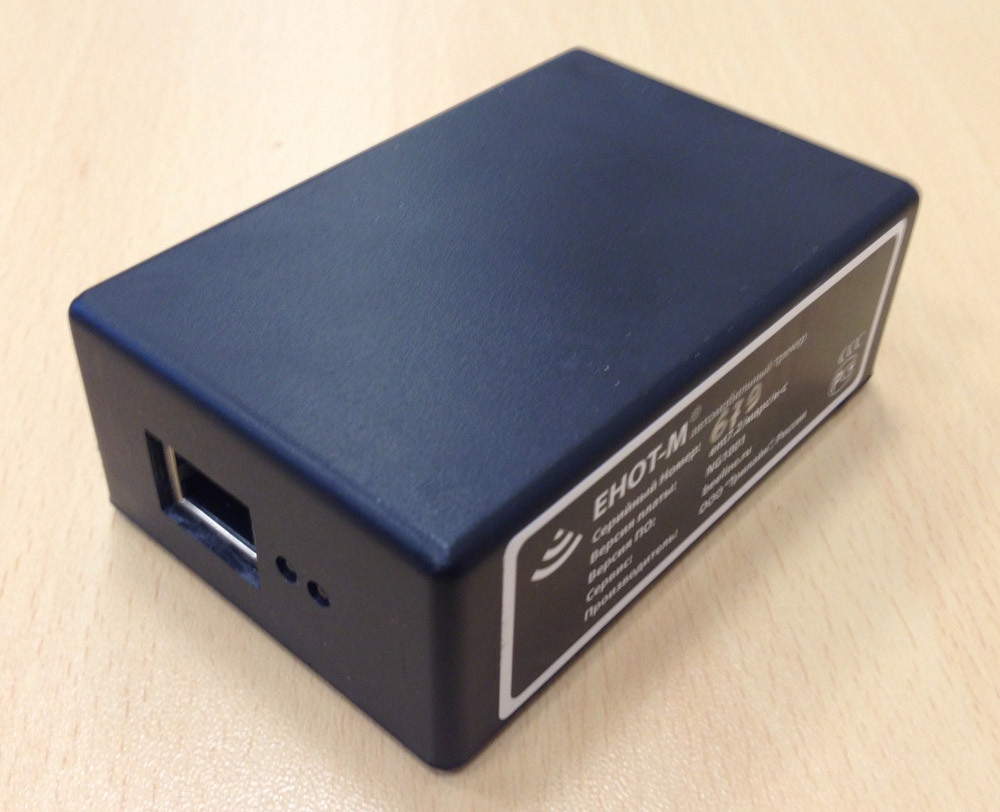
Ready device (serial model)

Packaging

Contents of delivery. I really wanted to have a screwdriver there right away so that I didn’t have to search, since it’s quite cheap.
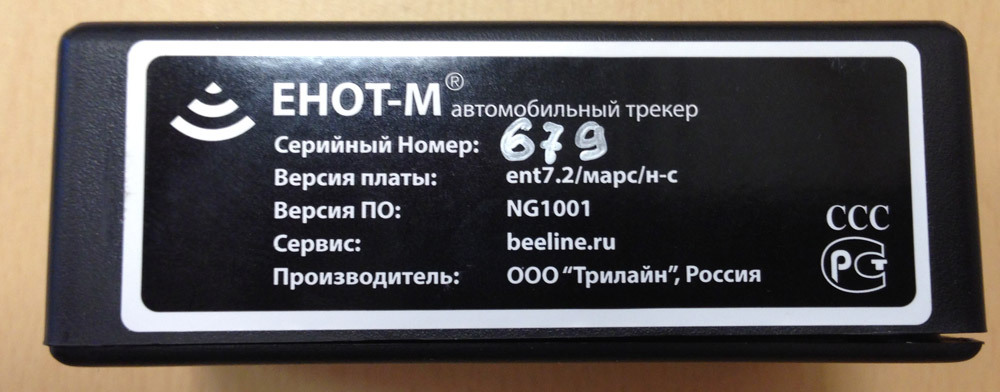
Separate pride - everything is done with us.

Reverse side of the board
Now our tracker is sold in the North-West region. Everything goes to the fact that we will use them throughout the Beeline network in Russia pretty soon.
Like this. If interested - I'll tell you a couple more stories of iron development with us.
Source: https://habr.com/ru/post/213235/
All Articles